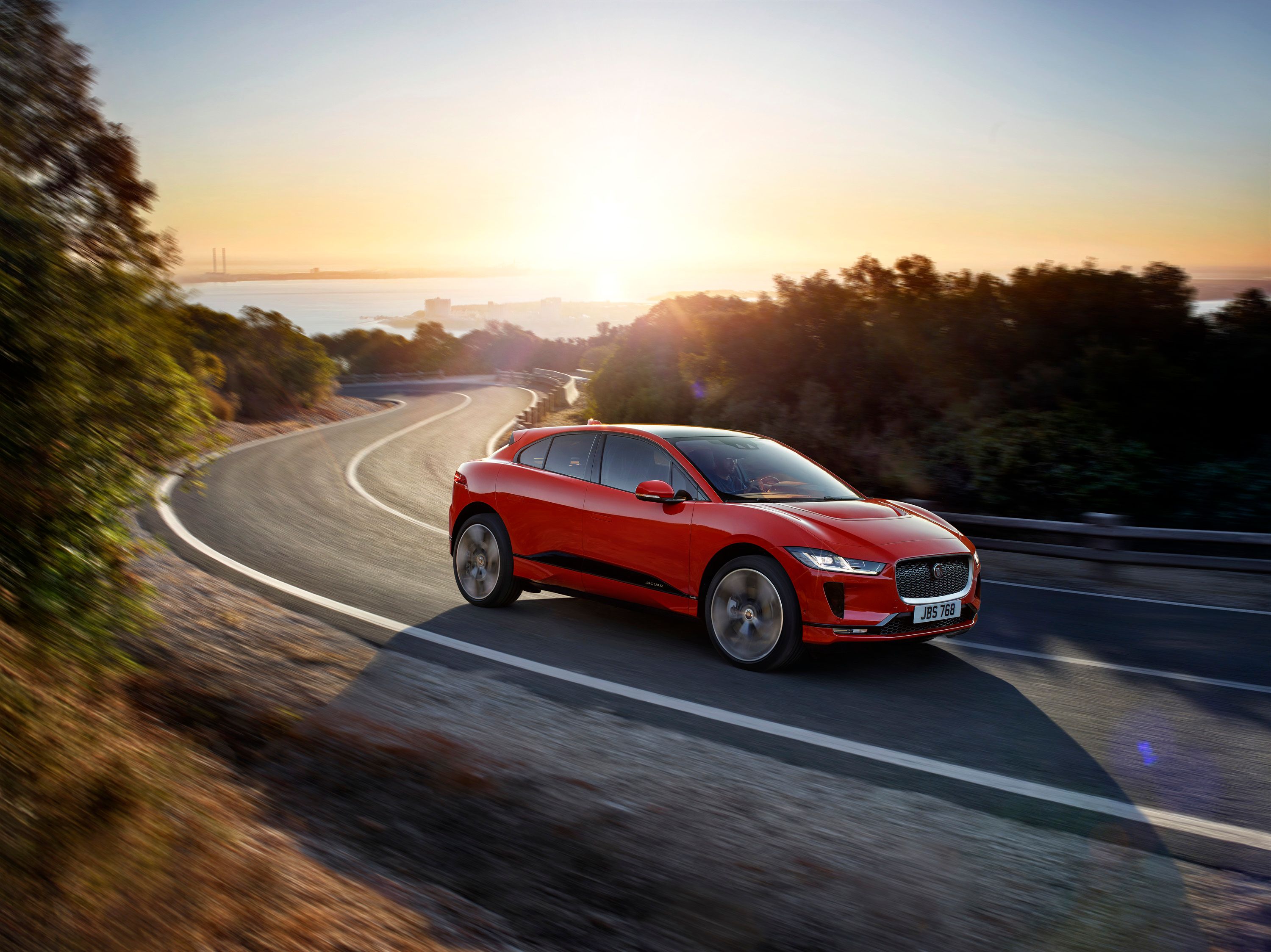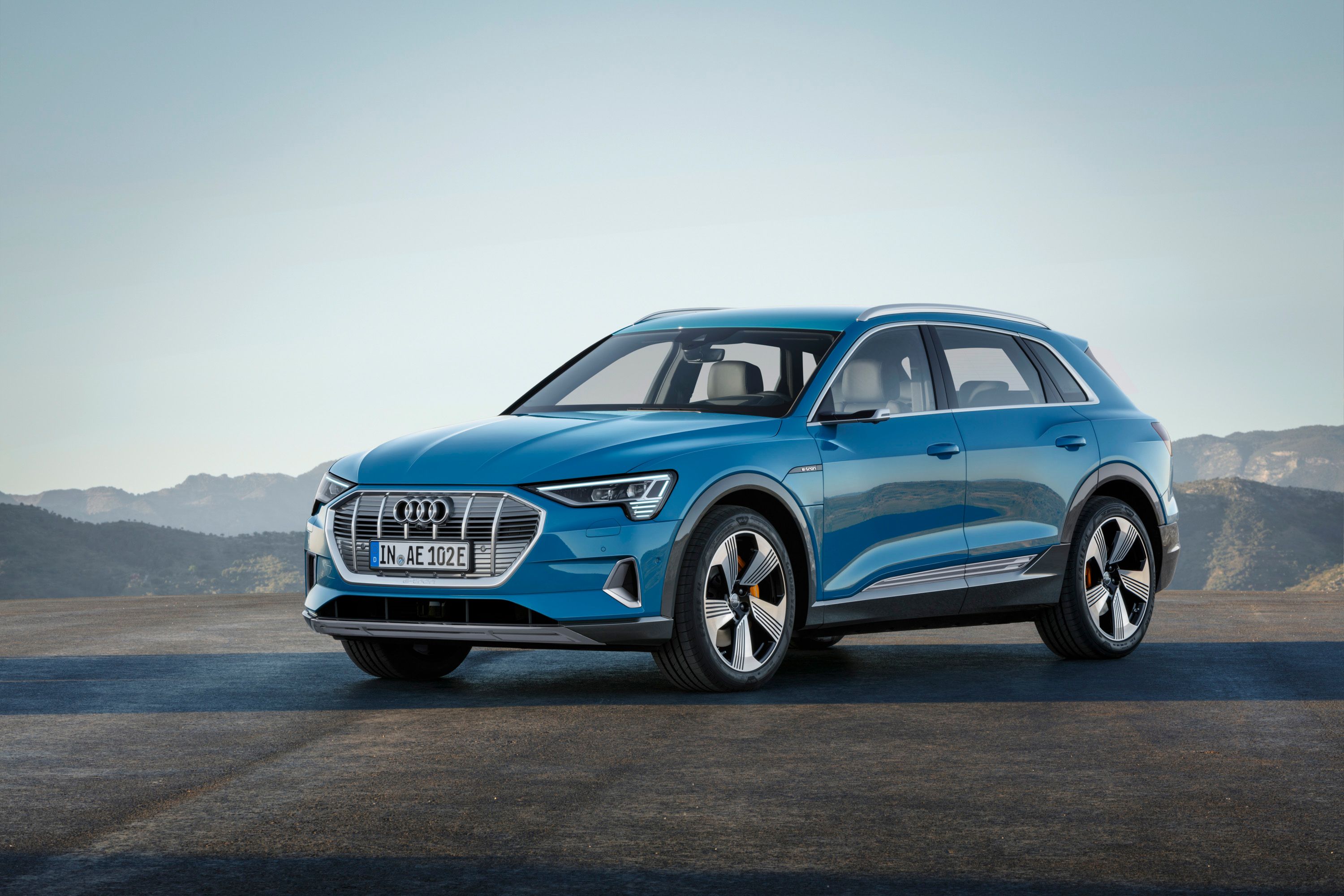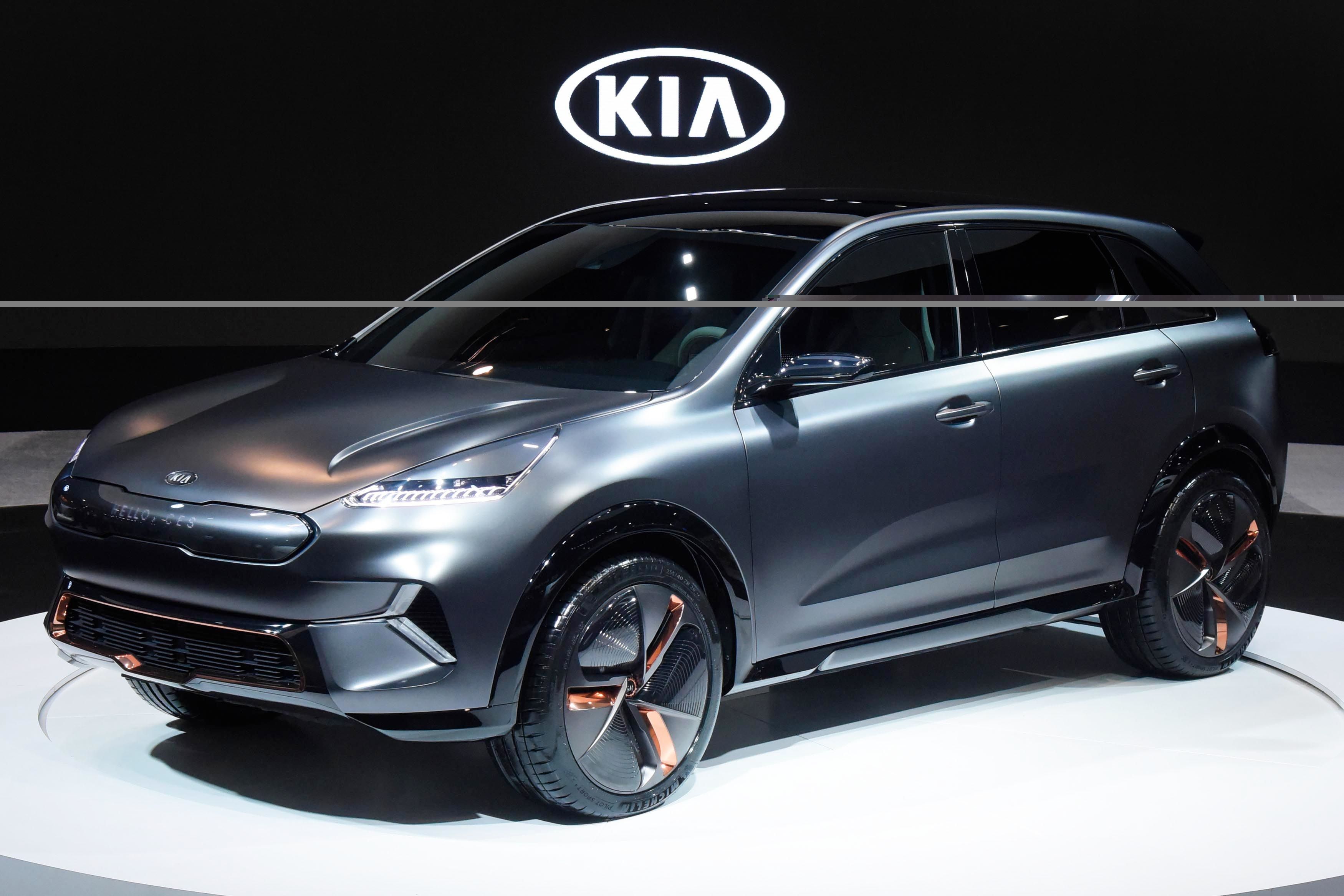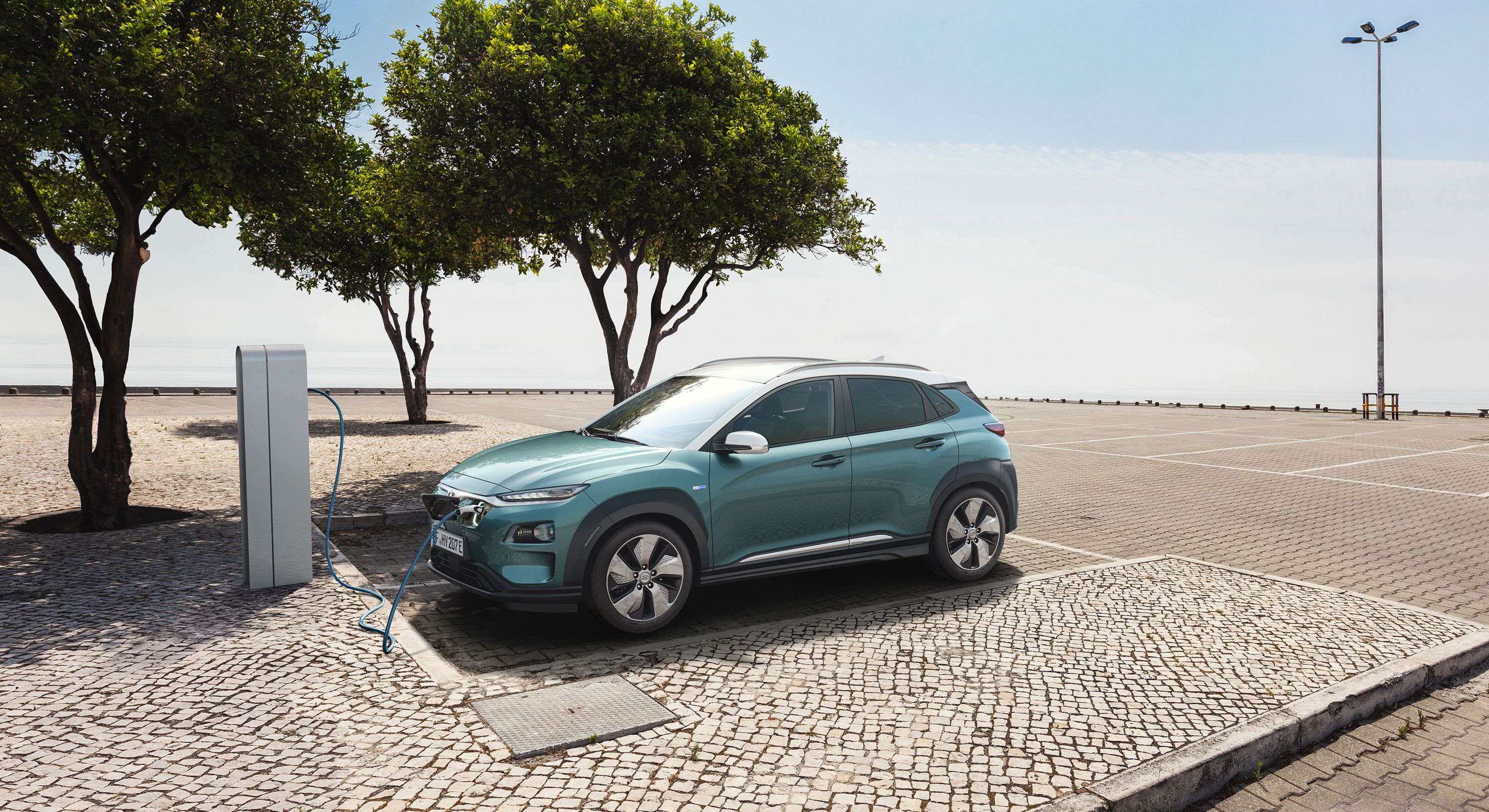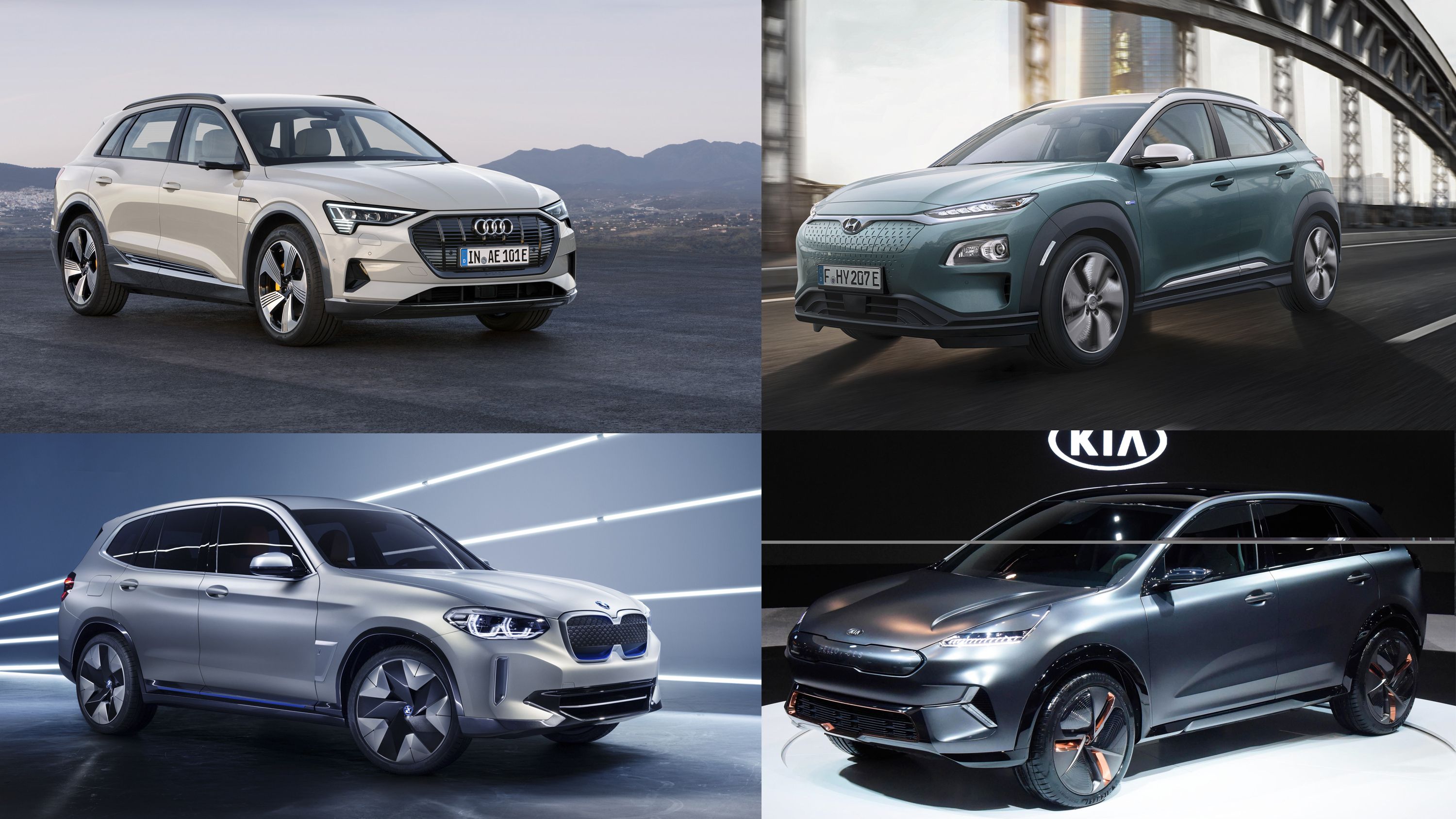With the short, but obvious invasion of electric SUVs on the market, I am quite interested in what all of those machines bring. Many of the major manufacturers invested heavily in introducing a new generation of electric SUVs with Mercedes, Audi, Jaguar, and BMW coming long after Tesla actually sparked the creation of the entire segment with the Model X.
Now, with a number of electric SUVs on the market one would expect some radically different thinking behind a seemingly similar car, but that may not be the case. Aside from five expensive electric SUVs (the I-Pace, the Model X, the EQ C, the E-Tron and the iX3 Concept), the only ones that were brave enough to give the market an electric shock are Hyundai and Kia with the Kona Electric and the Niro EV. So, learn here what all of them bring to the table and how do they differ.
Jaguar I-Pace
Exterior
Making a futuristic looking vehicle wasn’t the only path Jaguar designers had to take when imagining the new electric I-Pace. In fact, they’ve made it to perfectly suit the lineup without being too futuristically obsessive, like, for example, Mercedes-Benz was with its EQ C.
Interior
This arrangement reminds me of what Audi is doing with its cars (including the E-Tron SUV) and, more precisely, what Range Rover had done with the Velar interior.
Drivetrain and performance
The Jaguar I-Pace is powered by two electric motors, each of which develops 200 horsepower and 257 pound-feet of torque. This makes for a propulsion system with a maximum power output of 400 horsepower and 513 pounds-feet of torque. Interestingly enough, the drag coefficient isn’t as low as on some other cars on this list - the drag coefficient of the Jaguar I-Pace is 0.29 Cd.
|
Battery Capacity: |
90 kWh |
|
Range: |
220 miles |
|
Charging technology: |
Jaguar wall box. The I‑PACE is equipped with a 7kW, single phase AC onboard charger, which can fully recharge the vehicle overnight and deliver up to 35km (22 miles) of range per hour. A home socket can charge the battery for up to 38 miles per night. A typical 50kW charger can deliver up to 270km (168 miles) of range per hour*. As the public charging infrastructure improves, the I‑PACE will be equipped to accept up to a 100kW DC charge rate. This means you can easily add 100km (62 miles) of range in just 15 minutes. |
|
Price: |
$69,500 |
|
Delivery time: |
6 months (with possible 2-4 months delays due to prioritizations) |
|
Tow rating: |
Tow hitch available only in Norway with a tow rating of 1,650 pounds |
|
Boot Capacity (with all seats up/with all seats down): |
23.1 cubic feet (656 liters)/expandable to 51.3 cubic feet (1,453 liters) |
|
Rear seat legroom: |
35 inches |
|
Rear seat headroom: |
38.1 inches |
|
Safety Equipment: |
Electronic Stability Control (ESC), ABS And Driveline Traction Control, Side Impact Beams, Dual Stage Driver And Passenger Seat-Mounted Side Airbags, InControl Protect Emergency Sos, Park Assist Automated Parking Sensors, Emergency Braking, Forward Collision and Rear Traffic Monitor, Lane Keep Assist, Lane Departure Warning, Tire Pressure Warning, Dual Stage Driver And Passenger Front Airbags |
|
Wow Factor: |
It’s kinda beautiful. |
Read our full review on the 2019 Jaguar I-Pace.
Tesla Model X 75D
Exterior
All is said about Tesla cars in general.
Interior
The seats are cool, the room is great, the options are nice, but the overall ambiance lacks the composure of high-end SUVs some on this list most certainly extail.
Drivetrain and performance
Bear in mind, the Model X 75D is the least powerful Tesla Model X. Yet, the electric motors, in this case, develop 387 pound-feet of torque and 329 horsepower. Definitely not the most powerful car here but most certainly powerful enough for any imaginable electric adventure.
|
Battery Capacity: |
75 kWh |
|
Range: |
237 miles |
|
Charging technology: |
Wall Plug 2.3 kW 37h15m |
|
Price: |
$79,500 |
|
Delivery time: |
3 months average (according to customers) |
|
Tow rating: |
4,980 pounds |
|
Boot Capacity: |
88 cubic feet |
|
Rear seat legroom: |
38.4 inches |
|
Rear seat headroom: |
40.9 inches |
|
Safety Equipment: |
Electronic Stability Control (ESC), ABS And Driveline Traction Control, Side Impact Beams, Dual Stage Driver And Passenger Seat-Mounted Side Airbags, Front And Rear Parking Sensors, Blind Spot Sensor, Forward Collision and Rear Collision sensors, Lane Departure Warning, Tire Pressure Warning, Dual Stage Driver And Passenger Front Airbags, Curtain 1st And 2nd Row Airbags, Airbag Occupancy Sensor, Driver And Passenger Knee Airbag and Rear Side-Impact Airbag, Restricted Driving Mode, Outboard Front Lap And Shoulder Safety Belts -inc: Rear Center 3, Back-Up Camera, Front Camera |
|
Wow Factor: |
the rear doors, a massively powerful hallo version - the Model X P100D |
Read our full review on the 2016 Tesla Model X.
Mercedes-Benz EQ C
Exterior
Interior
Drivetrain and performance
Dual electric motor setup seems to be mandatory for the new generation of the electric SUVs. The Mercedes-Benz EQ C, also, has two electric motors that develop 402 horsepower and 564 pound-feet of torque. The thing is that the EQ C is heavy - 5,346 lbs.
|
Battery Capacity: |
80 kWh |
|
Range: |
200+ miles (yet undefined by EPA standards) |
|
Charging technology: |
CCS Combo DC fast-charge port will handle up to 110 kW, which Mercedes says should charge the battery to 80 percent in about 40 minutes, the EQC includes a 7.4-kW onboard charger that enables an overnight recharge. |
|
Price: |
$70,000 (estimated price for an entry-level version) |
|
Delivery time: |
First deliveries will start in 2020 (in Norway in 2019) |
|
Tow rating: |
3,070 lbs |
|
Boot Capacity: |
17.65 cubic feet (500 liters) |
|
Rear seat legroom: |
No information |
|
Rear seat headroom: |
No information |
|
Safety Equipment: |
Active Distance Assist DISTRONIC, Driving Assistance package, Active Brake Assist, Evasive Steering Assist, and PRE-SAFE® PLUS, Blind Spot Assist. |
|
Wow Factor: |
It’s an electric Mercedes-Benz that looks like it is from the future. |
Read our full review on the 2019 Mercedes-Benz EQ C
Audi E-Tron SUV
Exterior
When introducing the new Audi E-Tron SUV, Audi officials said that the company wanted to create a normal, regular car, only powered by electricity.
Interior
Taking the main cues from the high-end ICE powered models, Audi modeled the E-Tron SUV interior to be as impressive as the one in its latest SUV. This includes the latest MMI integration. Probably with even more gear than you may have on the regular models.
Drivetrain and performance
Audi actually reported that it did not want to chase any sporty performance figures with the E-Tron. Not in those words, mind you.
|
Battery Capacity: |
95 kWh |
|
Range: |
248 (European WLTP test procedure, which means it will probably offer 200+ miles of range according to EPA standards) |
|
Charging technology: |
2.3 kW charger - 42h45m |
|
Price: |
$74,800 |
|
Delivery time: |
Still undisclosed, but buyers may wait for the E-Tron up to a year |
|
Tow rating: |
4,000 lbs |
|
Boot Capacity: |
23.3 cubic feet/660 liters |
|
Rear seat legroom: |
Not disclosed |
|
Rear seat headroom: |
Not disclosed |
|
Safety Equipment: |
forward-collision warning, automatic emergency braking, blind-spot warning, rear cross-traffic warning, lane-departure warning, adaptive cruise with lane-keeping assist, exit-warning system, Park Steering Assist. |
|
Wow Factor: |
Best regenerative braking in the EV world, looks dignified and almost like any other Audi, has cameras instead of rearview mirrors (not for the U.S. though) |
Read our full review on the 2019 Audi E-Tron Quattro.
BMW iX3
Exterior
Much like the Audi E-Tron, the BMW iX3 feels like a normal SUV, only slightly adapted for its electric foray onto the market. Just look at it.
Interior
BMW is keeping the interior of its iX3 concept under wraps, but we can expect it to take some cues from the BMW i cars as well as the BMW X3 SUV.
Drivetrain and performance
We do not have a lot to go on with the iX3.
|
Battery Capacity: |
70 kWh |
|
Range: |
250 miles (according to WLTP? |
|
Charging technology: |
150 kW DC rapid charging available and it will possibly recharge 80 percent of the battery in 25 min |
|
Price: |
$83,000 (estimated) |
|
Delivery time: |
Not disclosed |
|
Tow rating: |
Not disclosed |
|
Boot Capacity: |
Not disclosed |
|
Rear seat legroom: |
Not disclosed |
|
Rear seat headroom: |
Not disclosed |
|
Safety Equipment: |
Not disclosed |
|
Wow Factor: |
It’s a Beemer electric compact SUV |
Read our full speculative review on the 2020 BMW iX3.
Kia Niro EV
Exterior
Exterior differences between the Kia Niro and the Kia Niro EV are basically minimal.
Interior
While the Kia Niro EV does have some special touches like the rotary gear selector and the parking brake button, it is in fact just the same as in any other Niro. Not bad in any shape or form, but not special either.
Drivetrain and performance
Power comes from the 201 horsepower and 291 pound-foot electric motor good for acceleration to 60 mph in 7.8 seconds. Something like a warm-hatch.
|
Battery Capacity: |
64 kWh |
|
Range: |
236 miles (estimated) |
|
Charging technology: |
|
|
Price range: |
$37,000 (estimated) |
|
Delivery time: |
Not disclosed |
|
Tow rating: |
Not disclosed |
|
Boot Capacity: |
15.9 cu. ft. (451 l) |
|
Rear seat legroom: |
37.4 inches |
|
Rear seat headroom: |
39.1 inches |
|
Safety Equipment: |
Forward Collision Warning with Forward Collision-Avoidance Assist, Smart Cruise Control with Intelligent Stop & Go, Lane Following Assist with a Level 2 autonomous system. |
|
Wow Factor: |
Nothing special, except, it is a sub-40-grand small EV crossover. |
Read our full speculative review on the 2020 Kia Niro EV
Hyundai Kona EV
Exterior
Let’s get real. Even the ICE-powered Kona looks nice. The Kona Electric looks even better. Not necessarily more beautiful, but more interesting for sure.
Interior
As is the case with the Niro, the Kona hides only slight changes inside. The central part under the dash feels a bit different, but the overall look is still very Hyundaish.
Drivetrain and performance
Considering it shares its drivetrain with the Niro EV, the Kona Electric also has similar performance.
|
Battery Capacity: |
64 kWh |
|
Range: |
258 miles (according to the EPA) |
|
Charging technology: |
Standard (AC) Approx. 6 hrs 10 min, Quick Charge (DC) (connected to a 100 kW DC fast charger) with approx. 54 min up to 80% state of charge |
|
Price: |
sub-$40,000 car (estimated) |
|
Delivery time: |
Not disclosed |
|
Tow rating: |
Hyundai does not recommend using it as a tow car, but I guess a few bicycles at the back won't do any damage. |
|
Boot Capacity: |
12 to 39.4 cu. ft. (334 l and 1,116 l) |
|
Rear seat legroom: |
33.4 inches |
|
Rear seat headroom: |
37.7 inches |
|
Safety Equipment: |
autonomous emergency braking, active cruise control, lane-keeping assistance, blind-spot monitoring, and rear cross-traffic alerts |
|
Wow Factor: |
One of a few cool little cars and it is electric (not cheap though) |
Read our full review on the 2019 Hyundai Kona EV
Conclusion
It really looks like managers of all of these manufacturers sat down around a table and made an agreement.
It went down something like this:
Let’s install a lot of displays inside, work on the aerodynamics as much as possible, keep the motor power at a similar level and while at that, let’s all install two motors in our SUVs.
I would not be surprised to learn that this really happened. While it is nice to see the dawn of an all-new class of vehicles, I find it quite uninspiring and rather disappointing to see all the cars with basically similar performance, the same technology underneath, and the same freaking SUV/crossover architecture. That is why the Kona Electric and the Niro EV seem like the most honest of all of them. Hyundai and Kia, if nothing, tried to scale down the tech. Others on this list, while definitely sporting unique looks and somewhat different dimensions compared with one another, are rather similar. Two motors, a 400ish horsepower output, all-wheel drive, basically the same safety gear, and advanced infotainment systems with a lot of displays. All of the premium cars here have all the same ingredients.

